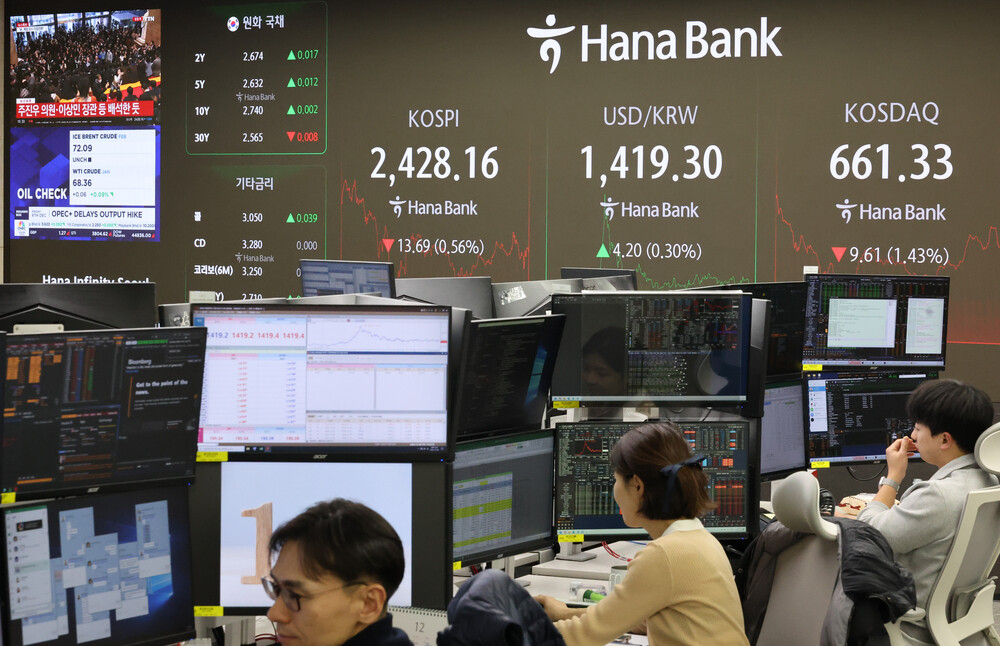
Seoul, South Korea – As concerns grow over a potential surge in the won-dollar exchange rate amid a state of emergency and prolonged impeachment proceedings, South Koreans are scrambling to secure dollars. With experts predicting the exchange rate could climb to 1,500 won to the dollar, individuals needing dollars for studies or work abroad are facing increasing anxiety.
Financial experts are advising those who need dollars to adopt a dollar-cost averaging strategy, purchasing a fixed amount of dollars at regular intervals, such as daily or monthly. "By calculating the minimum amount of dollars needed for the next year and purchasing them through regular installments, you can reduce risks," said Kang Dong-hee, PB team leader at Shinhan Premier PWM Gangnam Center. "Waiting for the exchange rate to drop can lead to even greater losses."
For investors worried about the devaluation of the won, experts recommend a long-term approach, suggesting that 20-30% of one's portfolio be held in dollars. However, they caution against making large-scale exchanges during periods of high volatility. Park Tae-hyeong, branch manager of Woori Bank's TCE Signature, advised, "Given that the recent rise in the dollar is due to domestic factors, it would be safer to start purchasing dollars in installments once the won-dollar exchange rate falls below 1,350."
There are various ways to invest the accumulated dollars, including US exchange-traded funds (ETFs), dollar-denominated deposits and insurance, and US Treasury bonds. Kim Ha-jin, PB at Hana Bank's CLUB1 Hannam PB Center, suggested, "Currently, dollar-denominated time deposits offer interest rates that are about 1% higher than those of won-denominated products, making them an effective tool for hedging against asset depreciation."
For those seeking to invest in dollars without actually purchasing them, one option is to invest in domestic ETFs that track US stocks and are not hedged against currency fluctuations. This allows investors to benefit from the appreciation of the dollar. For instance, the KODEX US S&P 500 TR, an unhedged ETF tracking the S&P 500 index, has returned 17.9% over the past three months, compared to 10.5% for the hedged version, KODEX US S&P 500 (H).
However, Kim cautioned that investing in unhedged ETFs is best suited for short-term strategies, such as until mid-January. For long-term financial planning, she emphasized the importance of dollar-cost averaging to diversify one's assets.
[Copyright (c) Global Economic Times. All Rights Reserved.]




























